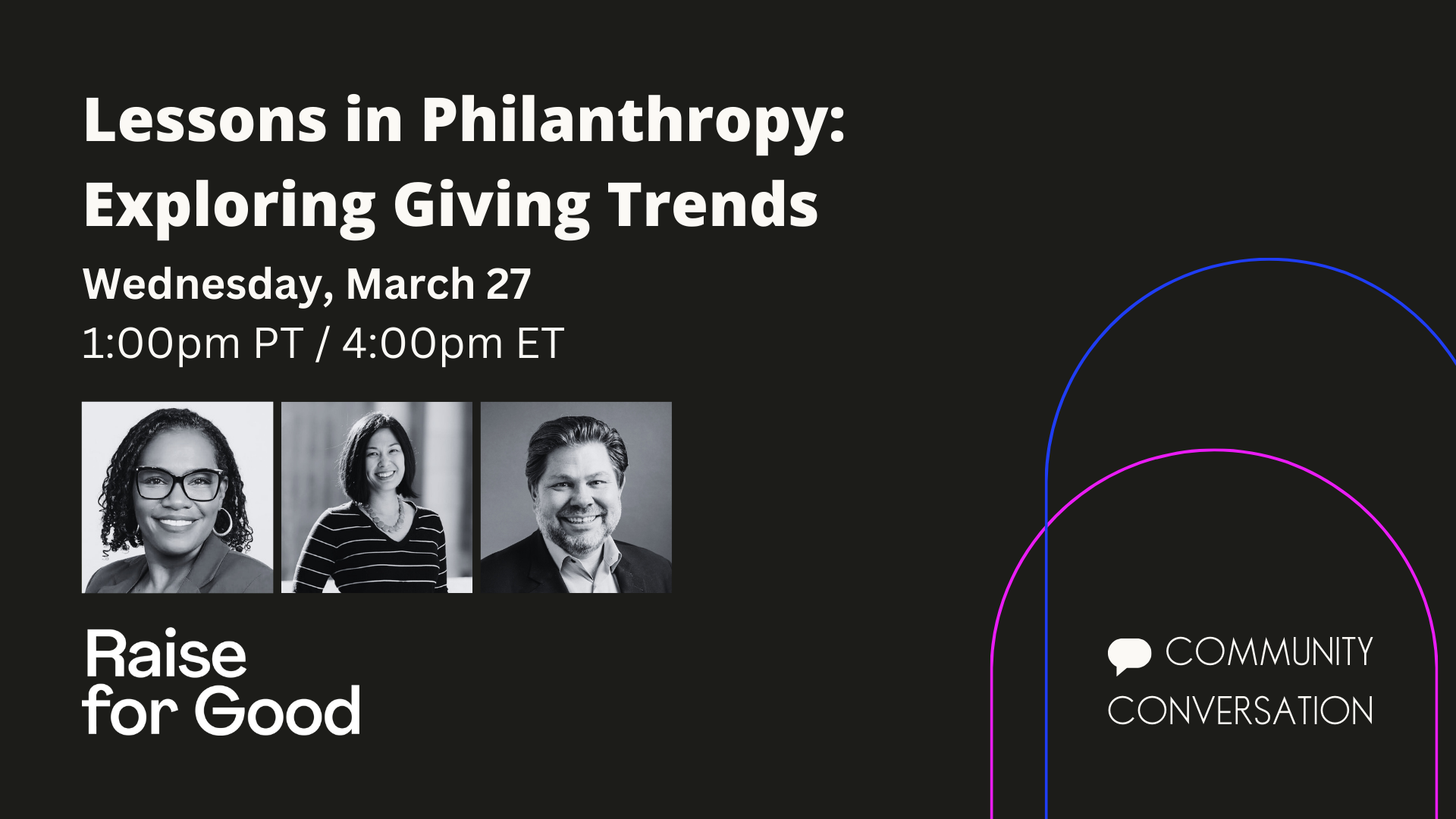
Recent philanthropic trends post-pandemic underscore the agility and speed with which grants and initiatives are moving. Through unrestricted grants, rapid community responses, increased policy engagement, and practitioners crossing sectors, both funders and nonprofits are navigating this dynamic landscape.
Our amazing speakers -
Moderator: Tige Charity, CEO at Kids in the Spotlight
John Bailey, Strategic Advisor and former Program Officer at the Bill & Melinda Gates Foundation
Georgette Bhathena, Chief Programs Officer at The Asian American Foundation
Event Recap
Cultivating Relationships Between Funders & Nonprofits
Cultivating relationships between funders and nonprofits presents challenges for both parties. On one hand, it can be an exhausting or discouraging process for nonprofits. Alternatively, funders can sometimes be limited to closed networks, which restricts equitable granting to marginalized communities that need funding most.
Nonprofits: Building relationships before seeking funding is key, offering insights into funders' strategies and aligning grant proposals accordingly. Sharing stories, data, and insights can educate funders and their future funding strategies while also demonstrating your value. Additionally, recognizing funders not only as sources of funding, but as individuals with diverse experiences and trajectories, can lead to potential future collaborations with other organizations, and help you tap into other networks.
Funders: Diversifying grant-sourcing methods to include marginalized communities and avoid perpetuating exclusivity is imperative. Decolonizing wealth involves reimagining funding approaches to reach isolated communities effectively.
Fostering Deepened Trust and Equitable Practices Between Funders & Nonprofits
Both funders and nonprofits play a role in building strengthened bonds and trust.
Funders: It’s important to listen deeply to grantees' needs to provide support beyond grant dollars with capacity-building and even burnout. Listen to how community leaders are measuring their own success, and integrate these learnings into your impact framework and funding strategies. Communicate transparently about fundraising goals, timelines, and strategies to maintain organizations’ sustainability. Multi-year grants and simplified application processes can benefit smaller grassroots organizations that may not have the capacity or resources to build out complex strategic plans and proposals.
Nonprofits: Remember to use qualitative and quantitative data across various timeframes to showcase leading indicators aligning with impact outcomes. This approach assists funders in advocating for your organization and justifying ongoing funding internally. While there are tendencies to “mission-creep” to fit particular grant scopes, stay true to your mission as it is becoming more common for funders to fund grassroots organizations. Be inquisitive and listen and learn from funders. Ask them to share collaborations they’ve been proud of or their recent learnings to help you understand their values. Don’t count out policy engagement as a powerful lever that can unlock massive amounts of funding, potentially amounting to more than all regional philanthropies combined.
“Philanthropies are sometimes put on a pedestal and people think they have all the insight and information or are super smart. In some cases, that’s true, but in most cases, they’re lacking a lot of information.”
“Funders are people. Nonprofit leaders are people.”
